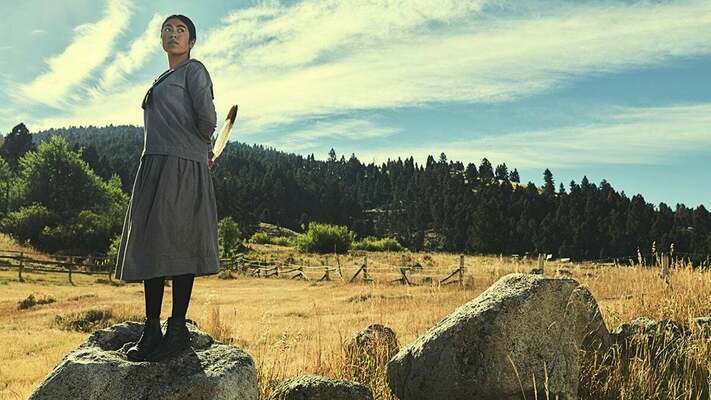Indian Schools: The real-life tragedy behind Yellowstone "1923"

“1923” returned after a brief hiatus this past weekend, and while the Taylor Sheridan drama (part of the prolific writer’s Yellowstone universe) is chock-full of power plays and brooding cowboys, one plot-line in this 20’s-set drama stands above the rest.
Teonna Rainwater and the French-Catholic boarding school nightmare that she was trapped in and is currently escaping from. Teonna, played with startling depth and profound rage by newcomer Aminah Hieves, might be a fictional character and ancestor to Gil Birmingham’s Thomas Rainwater, but her story is, unfortunately, very real. Sheridan is no stranger to the lasting trauma of the Indigenous peoples.
His 2016 masterpiece HELL OR HIGHWATER is rife with philosophical musings on land and ownership, and his 2017’s noir-thriller WIND RIVER tackles the harsh realities of healthcare, drug addiction, and the kidnap, sexual assault, and murder of Indigenous women that goes largely uncared about.
“Yellowstone” also encompasses these topics and many more through the series five seasons so far.
But with “1923” his story and presentation is (understandably) the darkest and most “real” that the Yellowstone universe has seen so far, and for good reason.
Boarding schools, such as the one in “1923”, began popping up in the mid-17th to early 20th centuries as re-education camps with a common goal of “killing the Indian to save the child”, attempting to “civilize” the Indigenous.
Their hair was cut. Their language beaten was out of them. Their gods were killed in favor of our own.
The schools were established by Christian missionaries of various denominations and supported wholly by the federal government, spread out through the U.S. but especially in rural areas in the midwest and upper north.
“1923” is set just 5 short years before The Meriam Report of 1928 would be published by the Department of the Interior after a years-long probe into the misconduct of such schools, sanctioning the Bureau of Indian Affairs to provide Indigenous youth with skills and education.
Real progress wouldn’t happen until 1968 and into the 1970s, however.
The schools were still around, but by then they were run by actual Native Americans, effectively removing the white leaders from their positions of power in Indigenous affairs.
From 1819 to 1969 there were over 408 federal schools.
This should hit somewhat close to home for members of Blackwell and Kay County as a Native American boarding school is right in our own backyardChilocco, just outside of Newkirk.
Speaking to the Journal-Tribune in the summer of 2021, many Chilocco alumni denied any particular knowledge or experience of wrong-doings or abuse at that particular institute, but that does not mean there wasn’t widespread violence at institutes like it or the one in “1923”.
Of the 400+ schools that operated in the U.S. The Meriam Report identified widespread reports of physical abuse, child labor, and unsanitary and cruel living conditions at many schools, specifically mentioned were ones in Kansas and Oklahoma such as the Kickapoo and Rainy Mountain schools in Powhattan and Gotebo, respectively.
While we may never know the full extent of the violence done to Native children during this awful period, it is important that shows like “1923” make sure we do not forget that this brutal history is not as far from us as we may like to think.
Please support The Blackwell Journal-Tribune by subscribing today!
 Loading...
Loading...
.png)
.png)
